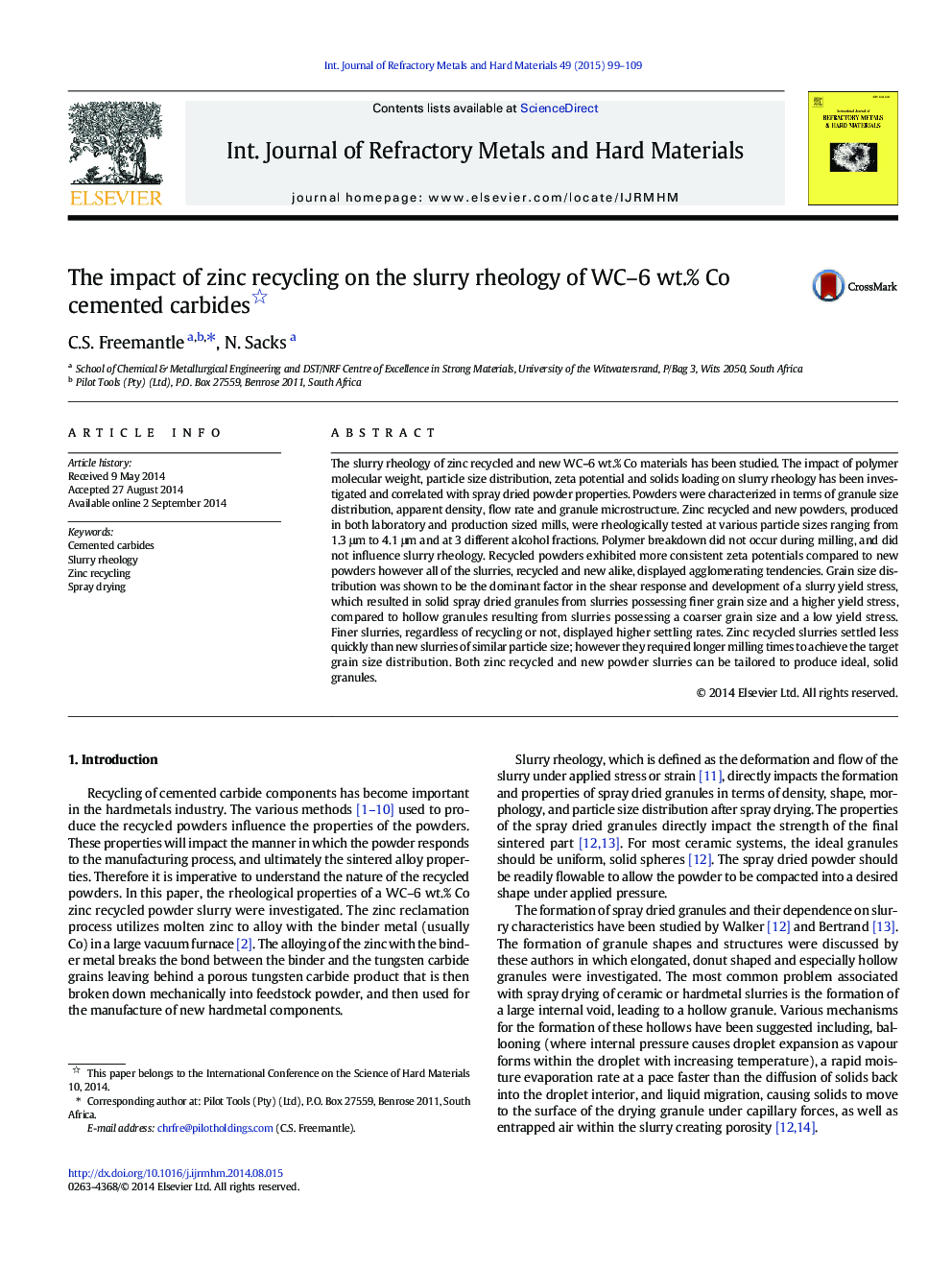| Article ID | Journal | Published Year | Pages | File Type |
|---|---|---|---|---|
| 1602994 | International Journal of Refractory Metals and Hard Materials | 2015 | 11 Pages |
•Grain size dominated the slurry rheology of new and zinc recycled WC–6 wt.% Co grades.•Zinc recycled materials possessed better slurry stability and settling rates than new materials.•Granule microstructure was determined predominantly by the slurry yield stress.•Finer slurries display greater settling rates and particle interaction.•Both new and zinc recycled slurries can be tailored to produce dense granules.
The slurry rheology of zinc recycled and new WC–6 wt.% Co materials has been studied. The impact of polymer molecular weight, particle size distribution, zeta potential and solids loading on slurry rheology has been investigated and correlated with spray dried powder properties. Powders were characterized in terms of granule size distribution, apparent density, flow rate and granule microstructure. Zinc recycled and new powders, produced in both laboratory and production sized mills, were rheologically tested at various particle sizes ranging from 1.3 μm to 4.1 μm and at 3 different alcohol fractions. Polymer breakdown did not occur during milling, and did not influence slurry rheology. Recycled powders exhibited more consistent zeta potentials compared to new powders however all of the slurries, recycled and new alike, displayed agglomerating tendencies. Grain size distribution was shown to be the dominant factor in the shear response and development of a slurry yield stress, which resulted in solid spray dried granules from slurries possessing finer grain size and a higher yield stress, compared to hollow granules resulting from slurries possessing a coarser grain size and a low yield stress. Finer slurries, regardless of recycling or not, displayed higher settling rates. Zinc recycled slurries settled less quickly than new slurries of similar particle size; however they required longer milling times to achieve the target grain size distribution. Both zinc recycled and new powder slurries can be tailored to produce ideal, solid granules.
